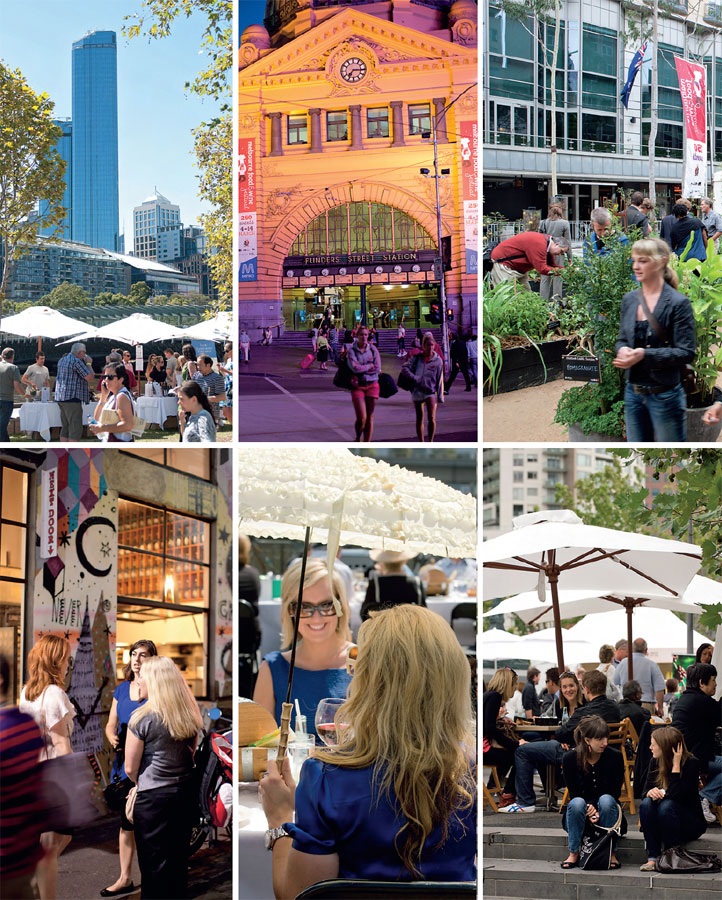Melbourne
The Melbourne Food and Wine Festival’s success comes from its innate understanding of the food and wine culture of Melbourne. The Festival is fine-tuned to the city’s obsessions, shines a light on the industry professionals, and feeds Melburnians’ thirst and hunger for the next big thing by providing a taste of the wider world. It truly projects a distinct sense of place.
A combination of good planning and good luck have led to the situation in Melbourne where the Festival still sticks to the original brief to “play to the Melburnians”. Those running the Festival, past and present, have all been fired with the same belief that in a town that’s home to 140 different cultures and more than 3,000 restaurants representing more than 70 cuisines, there is more than enough good stuff to attract a crowd.
From the earliest days of the Festival, Melbourne’s impressive collection of produce markets has played a central role in the festivities. At the inaugural 1993 event, the Queen Victoria Market hosted both a breakfast and the first ever Hawkers’ Market. There have been tours of the Footscray and Dandenong markets, lavish candlelit dinners among produce-laden stalls, and food and wine writers’ forums held at the Prahran Market (now also home to the Festival HQ) and “Walking, Talking, Tasting Tours” of Melbourne’s seven produce markets.
The Festival — in tandem with the hospitality industry of the city — has shown itself to have a certain genius for staging events in landmark and iconic locations around the city. This started, of course, with the first World’s Longest Lunch at the MCG that set something of a benchmark and a tone for future Festivals.
There was the Breakfast Around the Tan, a massively complicated but much-loved event, first staged in 1998, which saw a progressive breakfast being served around the 3.7 kilometres former horseriding (now jogging and walking) track that follows the periphery of the Royal Botanic Gardens. Or the still talked-about Donovans clambake, organised by restaurateurs and long-time Festival friends and collaborators Gail and Kevin Donovan, where crayfish and lobster were steamed under seaweed in a hole dug in the sand while guests, shaded by tent pavilions, were entertained by brass bands and marching girls. Or the Metlink Edible Garden that takes over the City Square, bristling with edible flowers, plants and trees, or the dinners and wine tastings that have taken place at the Melbourne Zoo, Crown Casino, Chinatown, Flemington Racecourse, Federation Square and, as part of a special feature of more recent years, a plethora of parties and drinks and tastings and barbecues down the city’s laneways and up on its rooftops.
Melbourne’s longstanding affair with cafe culture has also come under Festival scrutiny and, back in 2002, Celebrate the Bean, a one-day coffee festival at Southgate, shone an initial spotlight on the city’s increasingly complicated, even fetish-like relation to coffee and the way it is grown, harvested, ground and brewed. This was reflected in the 2010 event Roasters’ Week that saw seven of Melbourne’s boutique roasters present a week of workshops, forums and tours — a sure sign of a city obsessed.
It’s not the only obsession, as hugely popular events including Cellar Door and Farm Gate, formerly Cellar Door at Southgate that showcases the best of Victoria’s wine and the ever-expanding roll call of Winemaker Dinners can attest. And then there is Restaurant Week — or Restaurant Express as it’s now called — where Melbourne’s best restaurants play host to the nearly 35,000 diners, who take advantage of a fixed-price lunch of two courses and a glass of wine — an affordable, accessible opportunity for many to experience restaurants they’ve heard and read about.
It seems that, over the years, the Festival has left no Melbourne icon untouched. For several years Melbourne’s trams were part of the party with Tasting Trams travelling the City Circle route, plying travellers with small bite-sized snacks. Then there were the cooking demonstrations that took place in the window of the Myer department store and saw a roll call of great chefs and home cooks, strutting their culinary stuff to the crowds strolling past.
The Melbourne Food and Wine Festival has a talent for shining light into the corners of Melbourne and Victoria and, in doing so, lays the city and state open to discovery for visitors and its own inhabitants alike. In a city obsessed with wine and food it seems that there’s always something new to taste.

Cellar Door at Southgate, 2009; Flinders Street Station; Metlink Edible Garden, 2011; Wicked Sunday, Federation Square, 2009; World's Longest Lunch, Southbank, 2009; Crawl ’n’ Bite, 2011.